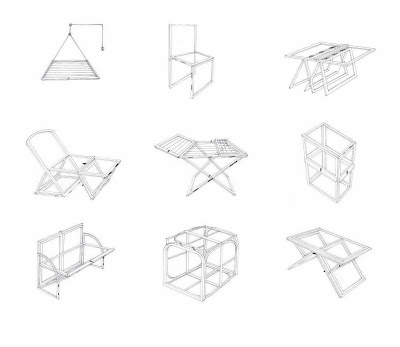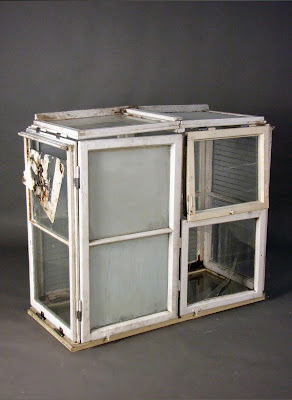Transience, not only in ephemeral materials, also in the ambivalence of each side of the objects and the work assembly is important here. The objects embody things from everyday life which often frame their surrounding environment and aim to create snapshots of urban situations. The shop window for example is built out of fragments, but as a whole it isn´t broken, it´s assembled and fixed.
evanovakova
PENOCZE
Eva Novakova, Irena Czepcova and Dagmar Petrovicka are the members of the group penocze. We first came together in the glass studio at the
Faculty of Art and Design of the University of Jan Evangelista in Usti nad
Labem. Our common interaction is based not only on our starting
point but also on the approach to working with the material and its structure. Our work is often composed using an artificial light source, which always
gives rise to the task of finding relationships between objects, space,
installation and viewer impact. The aim is to integrated conceptual tendencies in the
process of creation with traditional materials, creating site-specific
installations and objects with the common name penocze.
X - ring / Line / Harvest 2013
Process Land Art
The piece was exhibited around the gallery Na Kalvarii which is settle on the top of the hill at place called "Porta Bohemica" with two chapells and after harvest it was exhibited in overview show in Prague, where was the complete collection of all site specific pieces of art which was created during the years for this gallery Na Kalvarii.
Apart of our concept the public media reacted as "Crop Circles: Aliens land at Úštěk?"
The piece was exhibited around the gallery Na Kalvarii which is settle on the top of the hill at place called "Porta Bohemica" with two chapells and after harvest it was exhibited in overview show in Prague, where was the complete collection of all site specific pieces of art which was created during the years for this gallery Na Kalvarii.
Apart of our concept the public media reacted as "Crop Circles: Aliens land at Úštěk?"
White 2013
- Public areas and their visualizations, visually overcrowded spaces.
- Collection of information, long-term process of white surface in an urban environment use the observational principle in sense of gathering information from their surroundings and becomes a reflection of the exact area.
- The invasion of public space and monitoring the reactions of viewer as an active creator.
In Prague Karlin I hung three white canvases
of size 120 x 100 cm and three white canvases 60 x 40 cm. Places I purposely
chose in my neighborhood, so I can monitor daily development. Localities for
white canvases were selected thorough monitoring of public areas in Karlin.
Suitable
facilities for hanging frames were old abandoned buildings or walls, where the
human hand have already signed on to the public space. Impairment of places was
caused by various ways such as in the sense of presenting himself (tags) expressing
in easily visible places (graffiti) or efforts of illegal commercial
communications by posting flyers, bonding and anchoring ads on highly visible
locations. One becomes an active agent in the creation of visually in public
space.
White
canvas has become competitive object with all this kind of visual display and
its neutral nature seeks for its own position in a visually flooded areas. It defines
the “images", which is located next to it or define them. White canvases
as artifact ask through its symbolic metaphor for creation, artistic act and
encourage imaginations and challenge a certain response. This is a form of
communication with public space. It opens up the possibility of communication
between the artifacts X viewer, which are not for this environment quite
common. Canvases may disappear or change its visual nature. Canvases encourages
participation, anyone can participate in process of transformation this
pre-prepared area. Some impacts take place without the active involvement of
the "viewer". Observational principle is capture on the screen information
from the environment and so the image becomes a reflection of the exact place.
By creating a tight relationship between the related "images on the street”
and white canvases it support the position of the viewer as an active creator.
Exemplar 2013
Portrait
Series of photographs
Recently, I was in heat of seeking one lost small component going through the bag of mixed waste in our apartment. During picking the garbage piece by piece, crumb by crumb, I sudenly uncovered layers of passed days. In retrospect, I watched what was happening and eaten in the last week at our home.
Based on this experience and basic knowledge of garbology //Garbology is scientific study of waste and garbage, which refferes to lifestyles of certain groups of people applied especially in the sociocultural disciplines as anthropology, archeology, management.//
I was intrigued to create through this archaeological method metaphorical portraits of my neighbors. Portraits are composed of photographs of specimens, which I gradually took out from one waste bag belonging to the same householder. Each composition of photos works primarily with the element of fortune. It depended on the contents what I had just managed to pull out and also the rotting contents of some bags did require quick action.
For each Example = Householder has entered a number of photos documenting the content of each trash composed together and then I subjectively chose one photo that for me characterized the Example as a whole.
Series of photographs
Recently, I was in heat of seeking one lost small component going through the bag of mixed waste in our apartment. During picking the garbage piece by piece, crumb by crumb, I sudenly uncovered layers of passed days. In retrospect, I watched what was happening and eaten in the last week at our home.
Based on this experience and basic knowledge of garbology //Garbology is scientific study of waste and garbage, which refferes to lifestyles of certain groups of people applied especially in the sociocultural disciplines as anthropology, archeology, management.//
I was intrigued to create through this archaeological method metaphorical portraits of my neighbors. Portraits are composed of photographs of specimens, which I gradually took out from one waste bag belonging to the same householder. Each composition of photos works primarily with the element of fortune. It depended on the contents what I had just managed to pull out and also the rotting contents of some bags did require quick action.
For each Example = Householder has entered a number of photos documenting the content of each trash composed together and then I subjectively chose one photo that for me characterized the Example as a whole.
Set Chair, Table and Cupboard 2012
Bachelor final project
The initial source for this work are devastated houses in ghetto Předlice in Usti nad Labem. Artistic evaluation was focused on use of decrepit material. I selected the subject of daily needs, which lost its original function - in case of abandoned houses there were left only windows - and move them from the context of waste to the aesthetic value of artifact.
Outcome of this work was to make up a set of objects that use windows, the boundary between the external and internal environment, the membrane between the exterior and interior, between the intimate and public life. Composition resembling elements which have long ago vanished from inside of derelict buildings. The design here is primarily a metaphor for working with common window hinges anchoring in heterogeneous grouping composition that evocates furniture. Groupings are based on primary character of the utility product, but individual objects with their fragility of rottenness and damaged frames together with dangerous sharp splinter strongly reject trivial utility function.
This completely dysfunctional and irrational object is polemizing(arguing) with the idea that was placed in the past behind particular windows. Through progresive search and selection I created a set of windows which I infused with new entity or a provisional order. Individual objects are composed of found windows, some with the original glazed, others only with glass scraps or completely empty. During collection process I chose the glass shards, which I have inserted later onto empty windows to achieve intensive plasticity. Due to the fact that, after this operation there were places with a specifi c character (pea structure, frosted glass), I decided to also add some ordinary elements used on windows (blinds, curtains, white color). Although this intervention violated the original pragmatism of object taken out of an authentic environment, it humanized the whole work and emphasiced the emergence of fi ctional details of urban nature.


The initial source for this work are devastated houses in ghetto Předlice in Usti nad Labem. Artistic evaluation was focused on use of decrepit material. I selected the subject of daily needs, which lost its original function - in case of abandoned houses there were left only windows - and move them from the context of waste to the aesthetic value of artifact.
Outcome of this work was to make up a set of objects that use windows, the boundary between the external and internal environment, the membrane between the exterior and interior, between the intimate and public life. Composition resembling elements which have long ago vanished from inside of derelict buildings. The design here is primarily a metaphor for working with common window hinges anchoring in heterogeneous grouping composition that evocates furniture. Groupings are based on primary character of the utility product, but individual objects with their fragility of rottenness and damaged frames together with dangerous sharp splinter strongly reject trivial utility function.
This completely dysfunctional and irrational object is polemizing(arguing) with the idea that was placed in the past behind particular windows. Through progresive search and selection I created a set of windows which I infused with new entity or a provisional order. Individual objects are composed of found windows, some with the original glazed, others only with glass scraps or completely empty. During collection process I chose the glass shards, which I have inserted later onto empty windows to achieve intensive plasticity. Due to the fact that, after this operation there were places with a specifi c character (pea structure, frosted glass), I decided to also add some ordinary elements used on windows (blinds, curtains, white color). Although this intervention violated the original pragmatism of object taken out of an authentic environment, it humanized the whole work and emphasiced the emergence of fi ctional details of urban nature.


Subscribe to:
Comments (Atom)

































